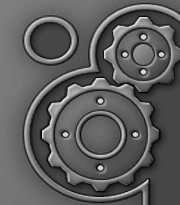
|
|
|
 I have always been surprised at the number of people who want to build a dark room in their house. Whenever a photographer has a little extra space in their house, they dream of building a dark room in it. Most people never really do it but there is nothing wrong with dreaming of it. To be quite honest, I have thought of it more than once. I have always been surprised at the number of people who want to build a dark room in their house. Whenever a photographer has a little extra space in their house, they dream of building a dark room in it. Most people never really do it but there is nothing wrong with dreaming of it. To be quite honest, I have thought of it more than once.
|

There are a few reasons that I can come up for creating this dark room fantasy. The first is the idea of what a dark room stands for. It is the place where the artist makes their art. A dark room also hides one of the mysteries of photography. The alchemy of starting with paper and some chemicals and ending with a beautiful image. All the burning, dodging and contrast manipulation is hidden from the rest of the world. That unfortunately is also one of the problems with a home dark room. You are on your own. There is no one to learn from and no one to interact with when you need another pair of eyes to look at your work. Finally a home dark room, I think, makes us feel a sort of kinship with masters like Edward Weston and Ansel Adams. Controlling the process from loading the film to drying the print and everything in between. |

The alternative may be a community dark room. Unfortunately there are very few of those in the area. When I lived in Oakland, I could use the adult education center’s dark room for $2 an hour. The equipment was OK, the space was not too tight and the price was unbeatable. However, the reason I did not build a dark room up there was not the price, but the other people who used the dark room. I was working with amateurs and professionals and found that I could learn and teach at the same time. The ability to interact with other people in the dark room was the real advantage.
Since moving to the San Diego area, I have tried to find the same kind of thing. Unfortunately, it has been very hard. Some camera stores rent out small individual dark rooms, but they leave a lot to desired. The prices are also high, running upwards of $10/ hour. The only place that I found to match the deal I had in Oakland is the Photo Dark Room in Escondido. Unfortunately, even that may be coming to an end. I have heard that the owners are considering closing part of it down and setting up a “by appointment only” business model. The reason I was told was because of the very high electrical bills. |

So what is a photographer to do? To build a dark room and stock it with a reasonable enlarger etc. will cost about $800. To get the equivalent digitally, it would cost about $500 for the printer (Epson Stylus Photo1270), $800 for a slide scanner (Nikon Coolscan IVED) and $1200 for the computer.
In reality the digital dark room may still be cheaper at $2500. Consider that the whole family can use the computer and you will get a color and a B&W dark room at the same time. I would miss not being in a dark room because, among other things, what I have learned in there has made me a much better photographer. In return, though, inhaling no toxic chemicals and being able to be closer to the family, while working on your photography in a well light room in the house, are big bonuses.
I would be interested to find out why you have or have not gone digital. What do you like and dislike about the good old wet dark room. Send me a note and give me your comments.
|
| |
|
|
| | |